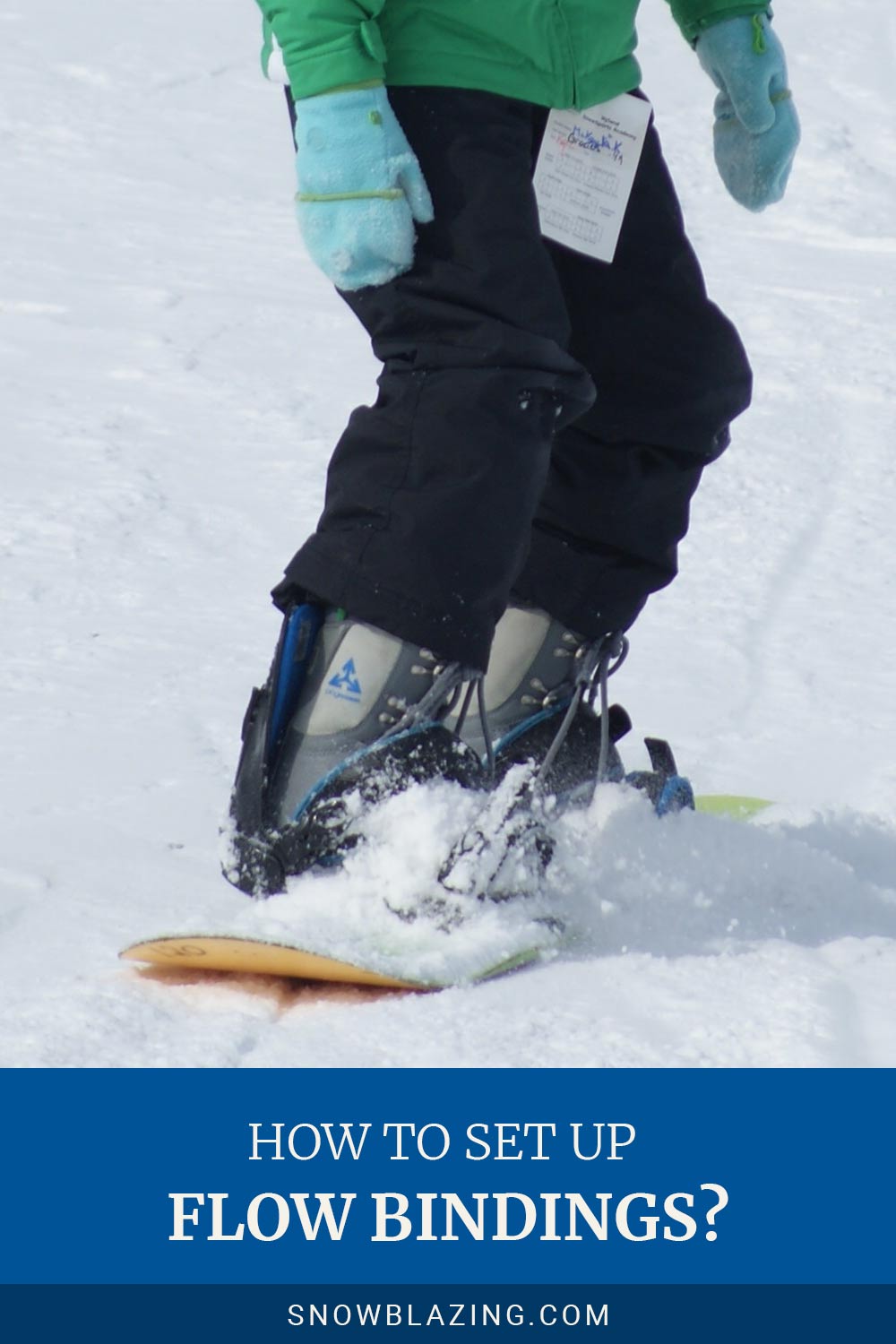How to Set Up Flow Bindings?
We may earn commissions for purchases made through links on our site. Learn more on our about us page.
One of the most overlooked parts of a snowboard kit is the bindings. The truth is that the bindings are just as important as the board itself because they are the connections between the border and the border itself.
Once you understand that, then comes to signing which type of bindings you want to use.
When it comes to buying things, there are two main types to choose from- strap-in and speed entry.
This article will look at a model that fits into the speed entry category. Flow bindings are super quick and very convenient to use. But just knowing about them does it mean you understand how to set up your flow bindings.
So on top of talking about the flow bindings themselves, we’re also going to give you some tips and tricks on how to set up your flow bindings, as well as some things to avoid when you’re doing it.

How Should Tight Flow Bindings Be?
Your bindings are the thing that is going to keep you attached to your board. Because of this, you want to ensure that they’re tight enough that she feels secure yet still able to maneuver comfortably. So the level of tightness depends on your comfort level.
Despite it being very personal and how tight your bangs are, most experts will say that you have to make sure that you tighten both the ankle and toe straps as tight as you can take so as not to affect the circulation within your feet.
One other thing you have to pay attention to is the flex of the binding. Flex is important to your board, but the binding is just as important, so this will affect how tight it needs to be as well.
Can You Over-Tighten Flow Bindings?
Like with everything else, you can over tighten the bindings to your board. However, when you do this, it can strip the threads and won’t stay tight. Of course, if this happens, you can always replace the bolts.
However, the threads won’t be great when it comes to the inserts because they will also have been stripped.
The best rule of thumb when you’re tightening your flow bindings to your board earth is to only tighten until the bolt doesn’t move with a gentle push. Then wiggling around that they are really fashionable should be fine.
How Can You Tell If It’s Overtightened?
It may be hard for some to tell when they’ve over their flow bindings. However, there are a few key signs that you may have an issue with your hands. Here are the two main signs that you may have overtightened your flow bindings:
- If your inserts are easy to pull out. This may mean that you’ve overtightened your flow bindings and have stripped the threads making the inserts unable to hold your bindings to your board tightly.
- If you break a screw while tightening them. This is pretty self-explanatory. If you’ve tightened enough that you break a screw, you definitely over-tightened.
Common Mistakes You Should Avoid
When you’re setting up your flow bindings, you want to ensure that you can avoid the common mistakes that most people make.
In regards to this, there are three big mistakes that most people make just in bindings in general, and those are the ones we’re really gonna focus on.
First, people tend to use the wrong size or type of screwdriver. Using the wrong screwdriver is going to lead you to not only stripping threads but also ruining the screws themselves.
Though every binding is going to be a little bit different most of them utilize Phillips head screwdrivers. And when guarding the size, typically a number three will work out well, but we highly suggest you do a little testing before you begin to screw in those screws.
The next mistake that a lot of people make is simply tightening the screws too tightly. If you tighten too much, your screws are gonna wind up stripping the threads so that means that the and which may cause some pretty serious issues.
On top of the thread stripping, replacing the threads themselves stretches them out. This could lead to some friction and a lot of trouble with loosening. The next common mistake is not adjusting the binding tray length before actually using them.
Most of these bindings are set to be able to be shorter and longer across the footbed. Not adjusting these will lead to an uncomfortable situation and won’t allow proper transfer of pressure when writing.
Tips and Tricks For Setting Up Flow Bindings
If you’re looking to set up your flow bindings, then you probably want some tips and tricks on how to set them up properly. Here are some suggestions we have:
- When you are mounting them, you want to make sure that you lay the snowboard down on a flat surface. This surface needs to be stable for you to mount the bindings to the board.
- You want to make sure that you are angling your base plate at the right degrees. The angle plate is the one with the holes in it.
- Make sure that you are aligning the holes properly, and then utilize the right screwdriver to tighten the system into these holes.
Final Thoughts on How to Set Up Flow Bindings
Show bindings are a popular type of quick-entry binding that many snowboarders opt for. But though you may have instructions on how to mount them, some issues need to be addressed before mounting them to your board.
We hope that by going through these, we’ve helped you understand how to install your flow bindings properly so that you can ensure that they are secure and you can get out there to enjoy your time on the slopes.


